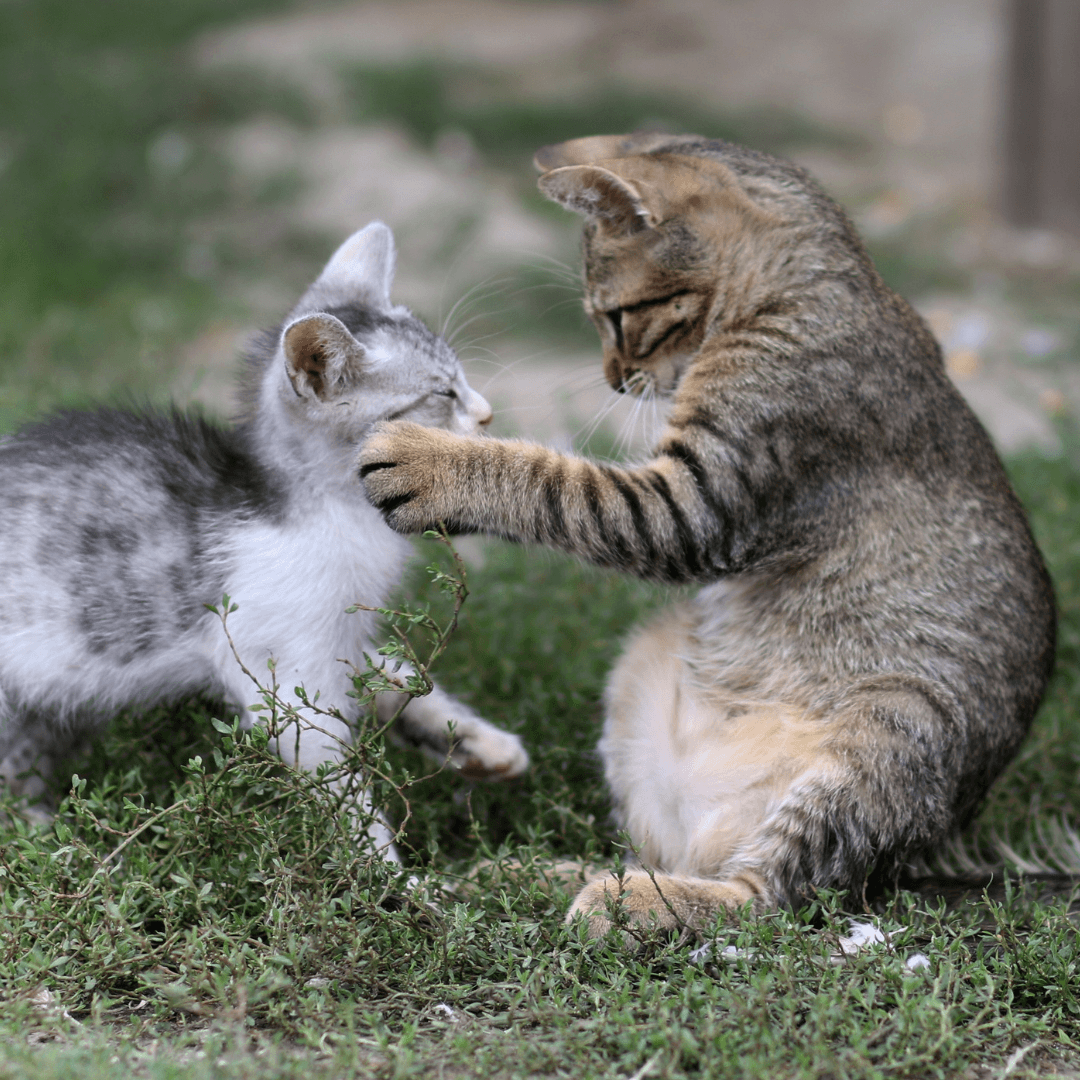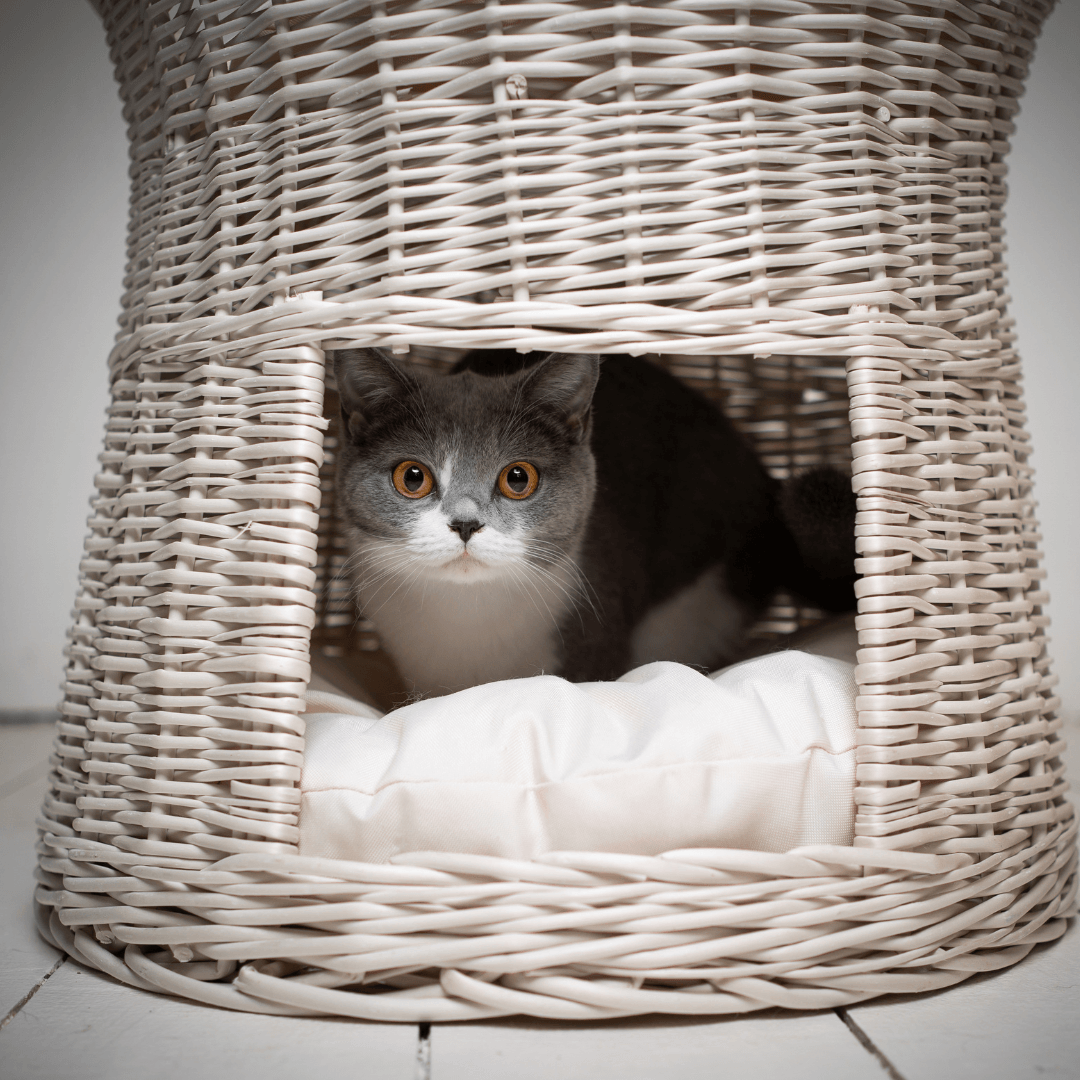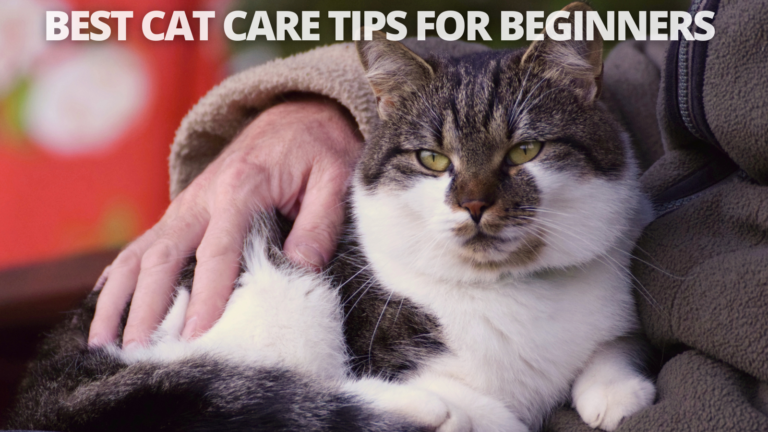Best Tips For Introducing A New Cat To Your Home
Best Tips For Introducing A New Cat To Your Home
Bringing a new cat into your home can be an exciting and rewarding experience, but it requires careful planning and consideration.
Introducing a new cat to your existing household, whether you have other pets or not, requires a gradual and gentle approach to ensure a smooth transition for everyone involved.
This article will provide valuable guidance and tips for introducing a new cat to your home and creating a harmonious environment where your new furry friend can feel safe, secure, and welcomed.
Whether you're a first-time cat owner or have experience with pets, these tips will help you navigate bringing a new cat into your life and forming a lasting bond with your feline companion.
Tips For Welcoming Your New Feline Friend
Welcoming a new cat into your home is akin to embracing a new family member, and the integration process is an exciting adventure filled with love and joy.
Each cat's personality and temperament are as unique as a fingerprint. While some cats may be outgoing and eager to explore new surroundings, others might be more reserved and shy.
As a responsible cat owner, understanding the individual needs of your new feline friend is vital in making them feel safe, secure, and cherished.
Like humans, cats thrive on routine and consistency, so creating a peaceful and reassuring environment is key to a successful transition.
Following these carefully curated tips, you can embark on a harmonious journey of building trust, strengthening bonds, and providing a loving home that your new cat will cherish forever.

1. Prepare A Safe Space
Preparing a safe space for your new cat is crucial to help them feel secure and comfortable in their new environment.
Choose a room that is relatively quiet and away from high-traffic areas. Furnish the space with all the essentials your cat will need, including a litter box, food and water dishes, a cozy bed or blanket, and some toys to keep them occupied.
Ensure the room has hiding spots, such as a cat tree, cardboard boxes, or a cozy cat cave, where your cat can retreat when they need some alone time.
Before bringing your cat home, ensure the space is cat-proof by removing any potential hazards or toxic substances.
Check for loose cords, poisonous plants, or small objects your cat could swallow. Providing a scratching post or cat tree in the room will allow your cat to engage in its natural behaviour and help it feel more at ease.
Once your cat is in a safe space, give it time to acclimate to its surroundings before introducing it to the rest of the house and other pets.
This gradual introduction will allow your cat to explore and adjust at their own pace, reducing stress and anxiety.
Spending time with your cat in its safe space, playing, and offering treats and gentle affection will help build trust and create a positive association with its new home.

2. Gradual Introduction To Other Pets
When introducing a new cat to other pets in your home, it's essential to do so gradually to avoid potential conflicts or stress for both animals.
Start by swapping scents between the pets to familiarize them with each other's presence. You can do this by gently rubbing a cloth or a soft brush on one pet and then allowing the other pets to sniff it.
This scent exchange helps them become accustomed to each other's smells before they meet face-to-face.
Next, allow supervised and controlled interactions between the pets. Keep the initial meetings short and positive, gradually increasing their time together as they become more comfortable with each other.
Use treats and positive reinforcement to reward calm and friendly behaviour, reinforcing positive associations between the pets.
Observe their body language during these interactions to ensure they are comfortable and not displaying signs of aggression or fear.
If any tensions arise, separate the pets and try again later. Patience is key, as it may take some time for them to adjust to each other's presence and establish a harmonious relationship.
Remember that every pet is unique, and some may take longer to accept a new addition to the household.

3. Use Positive Reinforcement
Positive reinforcement is a powerful tool when introducing a new cat and other pets to your home. You can create positive associations during their interactions by using treats, praise, and affection.
Whenever your other pets display calm and friendly behaviour around the new cat, offer them treats and shower them with praise.
Similarly, when the new cat shows signs of comfort and confidence, reward them with treats and gentle pets.
Positive reinforcement helps to build trust and confidence in all the pets involved, making them associate each other's presence with pleasant experiences.
It creates a sense of reward for calm and friendly behaviour, encouraging them to repeat those behaviours in the future.
This process can also help reduce any anxiety or stress the new cat may experience during the initial adjustment period.
Remember to use patience and consistency when employing positive reinforcement techniques. It may take some time for the pets to get used to each other, especially if they have different personalities or backgrounds.
Reinforcing positive behaviour with treats and praise during interactions will contribute to a smoother and more harmonious integration, fostering a welcoming and friendly atmosphere for your new feline friend in their new home.

4. Provide Essential Supplies
Preparing all the essential supplies before bringing your new cat home is crucial for a smooth transition.
A litter box is fundamental to ensuring your cat has a designated place to relieve itself. Place the litter box in a quiet and accessible area away from their food and water dishes.
Food and water dishes should be easily accessible and filled with high-quality cat food and fresh water. Opt for stainless steel or ceramic dishes, which are easy to clean and maintain.
Scratching posts are essential for your cat's instinct to scratch and keep their claws healthy. Appropriate scratching posts will prevent your furniture from becoming their preferred spot.
Toys are essential for mental and physical stimulation. To keep children engaged and entertained, consider a variety of toys, such as interactive toys, feather teasers, and laser pointers.
A comfortable bed or a cozy cat tree will give your new feline friend a safe and comfortable place to rest and observe their new surroundings. Having a designated resting spot will help them feel secure and at ease.
These supplies will meet your new cat's immediate needs and ensure a smooth and comfortable transition into its new home.

5. Monitor Body Language
Monitoring your new cat's body language is crucial to understanding their feelings and ensuring a positive introduction to their new environment.
Cats communicate primarily through body language, so observing their cues is essential. Signs of stress or discomfort may include hiding under furniture, excessive grooming, hissing, or swatting.
If you notice any of these behaviours, it is essential to give your cat space and time to relax and adjust at its own pace.
Avoid forcing interactions or overwhelming them with too much attention. Instead, provide a quiet and secure space where they can retreat and feel safe.
Gradually increase your time together and engage in activities your cat enjoys, such as playtime or gentle grooming.
Be patient and allow your cat to build trust and confidence in its new environment. With time and positive reinforcement, it will become more comfortable and start showing its affectionate and playful side.
Each cat's needs are unique, so understanding and respecting them is key to a successful introduction and building a strong bond with your new feline friend.

6. Supervise Outdoor Explorations
Supervising your new cat's outdoor exploration is essential to ensure its safety and help it acclimate to its new environment.
Before allowing your cat outside, ensure they fully adjust to their indoor surroundings and strongly bond with you. Start by introducing them to the outdoor space on a harness and leash, allowing them to explore under your supervision.
This way, you can prevent potential hazards, such as encounters with other animals or exposure to toxic plants. Gradually extend the length of outdoor excursions as your cat becomes more confident and comfortable.
Be mindful of your cat's body language during outdoor adventures, as any signs of fear or discomfort may indicate they need more time to adjust.
Providing a secure and enclosed outdoor space, such as a cat enclosure or catio, can also be a great way to let your cat experience the outdoors while ensuring their safety.
Always remember to stay nearby and watch your cat during outdoor exploration to ensure a positive experience and to help them continue to build trust in their new home.

7. Stick To A Routine
Maintaining a routine is crucial for helping your new cat feel secure and settled in their new home. Cats are creatures of habit, and a consistent daily routine can give them a sense of predictability and comfort.
Start by establishing regular feeding times, as cats rely on the routine for mealtime cues. Place their food and water dishes in the same location daily to create a familiar eating spot.
Incorporate playtime and interactive toys into their daily schedule to stimulate their mind and provide physical activity. Engaging in play sessions simultaneously daily can help your cat anticipate and look forward to these activities.
Additionally, setting aside specific times for cuddling and bonding with your cat can strengthen your relationship and build trust.
Consistency in the daily routine can reduce stress and anxiety for your new cat, especially during the initial adjustment period.
As they become more familiar with their surroundings and routines, they will feel more at ease and confident in their new home.
Be patient and understanding during the transition, as your cat may take time to adapt thoroughly. With a consistent and loving routine, your new feline friend will feel more at home and quickly become a cherished family member.

8. Provide Vertical Spaces
Creating vertical spaces for your new cat is essential to satisfying its instincts and providing it with a sense of security in its new environment. Cats have an innate desire to climb, perch, and observe their surroundings from a higher vantage point.
Vertical spaces offer a sense of safety and control, allowing cats to retreat to a high spot when they feel overwhelmed or need a break from the household's hustle and bustle.
Consider investing in a sturdy, well-designed cat tree with various platforms, perches, and hiding spots. Cat shelves or wall-mounted platforms can also be an excellent addition, providing your feline friend with vertical pathways and lounging spots.
Placing these structures near windows allows cats to enjoy natural sunlight and watch the outside world, stimulating their natural curiosity.
Providing vertical spaces fulfills your cat's instincts and enhances their well-being and confidence in their new home. Encouraging your cat to explore these areas by placing treats, toys, or catnip on the perches is essential, making the experience positive and rewarding.
With vertical spaces to call their own, your new cat will feel more relaxed, happy, and fully integrated into their new home.

9. Use Pheromone Sprays
Pheromone sprays, like Feliway, can enhance your new cat's sense of security and comfort in their new surroundings. The feline facial pheromone, which cats emit when they rub their faces against items to designate them as safe and familiar, is called Feliway.
This pheromone communicates a sense of security and familiarity to cats, creating a calming effect that helps reduce stress and anxiety.
You can create a soothing and familiar atmosphere by using Feliway or other pheromone sprays in the areas where your cat spends most of their time, such as their sleeping area or favourite spots.
This can be particularly helpful during the initial adjustment period when your cat is getting used to their new surroundings and may feel uncertain or stressed.
Additionally, pheromone sprays can minimize territorial conflicts in multi-cat households, promoting a more harmonious environment for all resident cats.
These sprays are safe and non-toxic, so they can be applied regularly to maintain a sense of familiarity and comfort for your cat.
With other strategies like gradual introductions and providing vertical spaces, pheromone sprays can significantly contribute to your new cat's positive transition into their new home.

10. Provide Hiding Spots
Providing hiding spots is essential for helping your new cat feel secure and in control during their adjustment period.
Cats are naturally territorial and may feel anxious or overwhelmed in a new environment. Offering cozy hiding spots like covered beds or boxes gives your cat a haven to retreat to and feel protected.
These hiding spots allow your cat to observe its surroundings without feeling exposed, helping it gradually build confidence in its new home.
Remember that hiding is normal for cats when faced with new stimuli or unfamiliar surroundings, and it shouldn't be discouraged.
Instead, respect your cat's need for privacy and avoid forcing them out of their hiding spots. As they grow more comfortable and confident in their new environment, they will gradually start exploring and becoming more social.
Patience is key during this process, as some cats may take longer to adjust. By providing these safe spaces and allowing your cat to set its own pace, you create a supportive and stress-free environment that helps your cat feel at ease and welcome in their new home.

11. Maintain A Calm Environment
Maintaining a calm environment is crucial for helping your new cat feel safe and comfortable as they acclimate to their new home.
Cats are sensitive to their surroundings, and sudden loud noises or constant disruptions can cause stress and anxiety, making it more challenging for them to settle in.
During the initial introduction period, try to minimize loud activities, such as vacuuming, loud music, or construction work, which can be overwhelming for your cat.
If you have other pets or children, it's essential to supervise their interactions with the new cat and ensure that they are calm and gentle.
Create a peaceful atmosphere by providing soft background music or using white noise machines to help drown out sudden sounds.
Allow your cat to explore and adjust to their new environment at their own pace without unnecessary disturbances.
Gradually, as your cat becomes more comfortable and confident, they will be better equipped to handle everyday noises and changes in their surroundings.
Maintaining a calm and serene environment during the early stages creates a peaceful and stress-free space that facilitates a smoother transition for your new feline friend.
Conclusion
Introducing a new cat to your home can be an exciting and rewarding experience, but it requires patience, understanding, and careful planning.
These tips help ensure a smooth and positive transition for your new feline friend. Remember to prepare a safe space, introduce them gradually to other pets, and use positive reinforcement to create a welcoming environment.
Providing essential supplies, monitoring their body language, and supervising outdoor exploration are essential for their well-being.
Stick to a consistent routine, offer vertical spaces and hiding spots, and use pheromone sprays to reduce stress.
Most importantly, maintain a calm and peaceful environment during the adjustment period. Each cat is unique, and some may take longer to adjust than others, so be patient and allow them the time they need to feel at home.
With love, patience, and understanding, your new cat will soon become integral to your family, bringing joy and companionship for years.
I trust you enjoyed this article on the Best Tips For Introducing A New Cat To Your Home. Please stay tuned for more blog posts shortly. Take care!
JeannetteZ
>>>Please click here to read my all-inclusive article about the Best Cat Care Tips For Beginners<<<
Your Opinion Is Important To Me
Do you have thoughts, ideas, or questions? I would love to hear from you. Please leave your questions, experiences, and remarks about the Best Tips For Introducing A New Cat To Your Home in the comments below. You can also email me at Jeannette@Close-To-Nature.org.
Disclosure
This post may contain affiliate links. As an Amazon Associate and other affiliate programs, I earn from qualifying purchases at no extra cost to you. Please read my full affiliate disclosure.
You might also enjoy these blog posts:
Best Tips For Choosing The Right Cat Food
The Role Of Cats In Ancient Civilizations
Best Senior Cat Care Tips And Advice
Best Tips For Maintaining A Healthy Coat In Horses







